#adolf born
Text



Imago
1984, dir. Miloš Macourek, Adolf Born and Jaroslav Doubrava IMDB
#Czech#čumblr#Czech cinema#Czech film#Imago#Miloš Macourek#Adolf Born#Jaroslav Doubrava#short film#animation#czech animation#fantasy#comedy#film#film edit#classicfilmedit#1980s#central Europe#european cinema#european film#european animation#campy#psychotronic film#Czech Republic#Czechia#Czech pop culture#gif
47 notes
·
View notes
Text

Czechia, 1993 // designer: Adolf Born; engraver: Martin Srb.
3 notes
·
View notes
Text

Art by Adolf Born
6 notes
·
View notes
Text

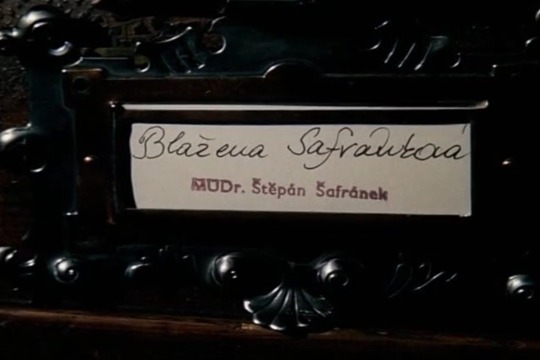



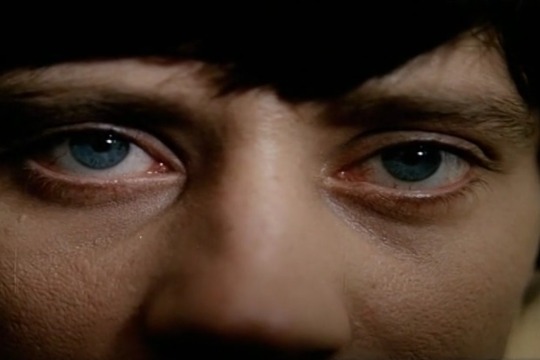
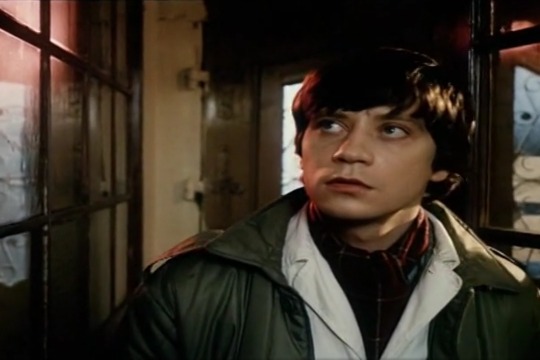
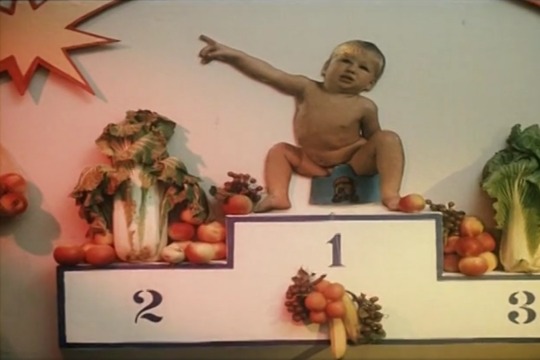


Jak básníkům chutná život (1988)
#dušan klein#80s#1988#film#československá kinematografie#štěpán šafránek#pavel kříž#eva vejmělková#básničky#retro#czechoslovakia#československo#píšťalka#adolf born#snad proto že jsi ze zámku#snad pro ten šampon z heřmánku#jak básníkům chutná život
2 notes
·
View notes
Text
Supporters of Masha Gessen, who is Jewish, and whose grandfather and great-grandfather were among family members murdered by the Nazis, have been quick to point out the irony of suspending a prize awarded in memory of Arendt, the German-born Jewish-American historian, philosopher and antitotalitarian political theorist who coined the phrase “the banality of evil”, in connection with the trial of leading Nazi Adolf Eichmann, which she covered as a journalist for the New Yorker.
#Masha Gessen#Heinrich Böll Foundation#german fear and guilty#german awards journalist canceled 2023#Palestine#Gaza genocide#Germany's Hannah Arendt Prize 2023
3K notes
·
View notes
Text
Sweet Dee’s Complete Backstory (1976-2005)
[cw: suicidal ideation, emotional abuse, bullying, body shaming etc..]
Deandra "Dee" Reynolds was born the older twin to Barbara (born Landgraf) and Frank Reynolds in 1976, the latter of which raised illegitimate children not knowing that their biological father was Bruce Mathis, a man his wife was having an affair with. Barbara was 28 years old at the time, and Frank was 33. Frank has claimed that Dennis and Dee would have had a brother, Donnie, had they not eaten him in the womb.
Dee was raised not by her emotionally distant mother, Barbara, or her father, Frank, but rather a "series of Mexican women" who served as nannies. Barbara, who chose Frank under the belief that he was wealthier than her former lover Bruce Mathis, consistently favored Dennis over Dee. Thanks to Frank’s real estate business and shady dealings, the twins had a financially stable childhood.
The neglect from her parents was supplemented by the dubious influence of her maternal grandfather Pop Pop (Heinrich Landgraf), a former SS officer, whose presence in her life introduced her to extreme ideologies and further complicated her moral landscape. Based on his uniform, he was a low ranking gestapo officer. He may have even been an acquaintance of Adolf Hitler. Barbara was certainly raised with a Nazi belief system, a tradition he would go on to continue with his grandchildren Dennis and Deandra. His home was filled with Nazi memorabilia including the German Shepherd painted by Hitler.
In 1981 when the twins were five, Pop Pop attempted to indoctrinate his grandchildren through a Neo-Nazi summer camp. All of this was so normalized within the family that the twins didn’t realize there was anything wrong or off with these things until their 20s.
Dee and Dennis went to Waldron Elementary school. They grew up in the Reynolds house that would later become the “Party Mansion”.
Frank was often away conducting business and Barbara was an absent mother addicted to amphetamines. Despite this, at some points they take trips to the Jersey Shore and the twins build positive memories there together.
Frank and Barbara were incredibly neglectful and verbally abusive to Dee, the “black sheep” of the family. Among other things, Barbara used to always say “Worst is first” because Dee was born first.
Raised primarily by a series of caretakers rather than their own parents, the twins were subjected to cruel psychological games like the Christmas "fake out," where Frank would show off the gifts the children had wanted most for himself, while Dee and Dennis received empty boxes. Frank would make home movies of Dee and her brother opening the empty boxes, laughing at their disappointment.
Such experiences contributed to her complex relationship with reality, where she often downplays or rationalizes the abnormal behaviors witnessed in her family, including those of her brother Dennis. For instance, she dismisses Dennis's violent act of snapping a crow's neck, revealing her struggle to maintain a semblance of normalcy against her better judgment. Later in life Dee still defends and downplays this behavior saying,
“Well, he kind of... snapped the neck, uh, off a crow one time a little bit. But that... but that's not not normal right, you know? (laughs) I mean, it was just like boys being boys. Yeah. That...Look, we had a totally normal childhood, and...Look, Dennis wouldn't hurt a fly. No way.”
To which Frank would say : “Whatever Deandra says is BS. She's probably just covering for him because she's afraid he's gonna snap her neck like that crow.”
While she does tend to minimize what she saw, she began having recurring nightmares about it that would haunt her for life. “I still have nightmares about it…And I'm old.”
Her tendency to put Dennis on a pedestal despite his glaring flaws also highlights her conflicted feelings of loyalty, envy, and shared identity as twins. Dee has always put Dennis on a pedestal, so when he does things that are clearly wrong she has to find ways to compartmentalize and rationalize it to herself. You can also see that Dee tells herself that her childhood was normal, despite all of the traumatic experiences.
Their extended family consisted of at least Pop-Pop, Uncle Max and Aunt Donna (Barbara’s sister) as well as their cousin of similar age Gail “the snail” who they found annoying, so they would frequently bully and throw salt at her.
Dennis:“No one likes salting the snail but she gives you no choice.”
Dee: “She doesn't leave you with any options.”
Barbara was a perfectionist about appearances, which not only made her extremely insecure about her own looks and aging but also incredibly cruel towards Deandra. She constantly told Dee that she “wasn’t pretty enough” for whatever she was trying to accomplish. She would also fat shame her when she was clearly not fat at all. (Also, Barbara later on dies from a botched neck lift after Frank makes one remark about her “turkey neck” after their divorce.) Barbara held herself and her children to impossible beauty standards, and Frank didn’t exactly help; he actually perpetuated it, going so far as to call Dee “a dog” and never calling her pretty. Dee grows to hate and resent her mother, and neither twin attended her funeral later on.
Dee was a successful child beauty pageant winner, winning several shows she entered on her own despite both parents’ constant criticism of her looks and lack of support. (Later in life when she performs for Frank’s Little Beauties Pageant, during her original song “Moms Stink” she throws a photo of Barbara in the trash onstage).
Dennis and Dee were also raised Catholic, frequently attending church and confessing their sins.
By the time she reached middle school in the late 1980s, she had been diagnosed with scoliosis and made to wear a back brace, which became the source of a lot of bullying down the road and earning her the nickname “Aluminum Monster”. Dennis began to fit in with the “cool kids” more than Dee was.
Later on Charlie reads her middle school diary entries from her childhood bedroom in the Reynolds House / Party Mansion and discovers the following snippets from this period..
“Dear Diary, the dance was a total disaster. I cried myself to sleep again last night. Mom forced me to wear the back brace. And all the school chanted "aluminum monster!”
and
"I'm totally gonna tell Eric how much I like him tonight. Even though Danielle was like all over him today in school. Mother said, "Don't bother. He wants a pretty girl instead. "'
This period marked a turning point for her depression and possibly the beginning of her s**** ideation.
In the early 1990s, the gang entered high school. Dee attended the Academy of Notre Dame an all-girls academy that was affiliated with St. Joseph's Preparatory School, which Dennis Mac and Charlie went to. By 1993 Frank was gone in Vietnam opening a sweatshop. Dee had already established herself as unpopular due to her back brace and horrible self esteem. However, she continued to try to fit in and become a “cool kid”. Having no friends, she hangs out with Ingrid “Fatty Magoo” Nelson, another girl in her class that is frequently bullied.
Other classmates of hers included the Waitress, Maureen Ponderosa, Stacy Corvelli, and Nikki Potnick.
She attended physical therapy twice a week with Matthew Mara, a boy from St. Joseph’s with a huge crush on Dee and whom the gang would tease. Dee found belonging and power in taunting him, making him do all of her math homework as well as embarrassing things (like making him eat horse poop before getting to kiss her then refusing because ‘his breath smelled like shit’) much to Dennis and his friends’ amusement. She would also make fun of Brad Fisher for his acne along with the other students. The gang would also drink and party underage frequently.
During this time Dee found an escape in drama class with Dr. Larry Meyers. He made her feel a sense of self worth when she was performing, as he encouraged her talents and cast her in roles.
Around 1994, the twins graduate high school. Around this time Dee decided to stop going to her church, which may or may not be linked to her newfound passion for the pro-choice movement. She got into University of Pennsylvania and chose Psychology as her major, and was assigned a dorm with a female roommate. Somehow Dee’s insecurity and possibly internalized misogyny created a strange dynamic between them of jealousy, rivalry, and obsession.
By 1997 her back brace was removed. Dee enters into a secret sexual relationship with her professor Dr. Gainer. Her roommate issues escalate as Dee finds her “annoying” and accuses her of copying her and wearing her clothes, which Dennis claims happened the other way around. The conflict came to a head when, as she puts it, she burned her roommate “Down to the box springs whilst she was sleeping” after she “crossed” her.
Dee is sentenced to be institutionalized, and presumably get no support from her parents during this phase. Not only does Barbara see her as even more of a disappointment, Frank probably wouldn’t set foot in another mental hospital even if he wanted to. The family becomes more estranged, and while the twins remain in each others lives, they distance themselves from their parents.
By 1998 Dee was released with medication and a treatment plan, which probably caused her personality to seem more “sweet” than usual. Mac and Charlie were working at the roller rink where she also had a head injury around this time that went untreated.
At some point Dennis and Dee get involved with gay culture to the point of having an almost encyclopedic knowledge of gay slang. The gang also creates the board game “Chardee Macdennis”, during which in one game the boys emotionally abused Dee for two minutes straight, which led her into a deep depression and she attempted to commit s*** with pills. The guys purchase Paddy’s Pub and hire Dee as their bartender to help her get back on her feet. She manages to get a one bedroom apartment and a cat, as well as taking up acting classes again where she meets her friend Artemis. and that brings us to episode one!
#sweet dee reynolds#sweet dee#iasip#dee reynolds#dee lore#it’s a bit of speculation but I tried to keep it canon for referencing :)
59 notes
·
View notes
Text
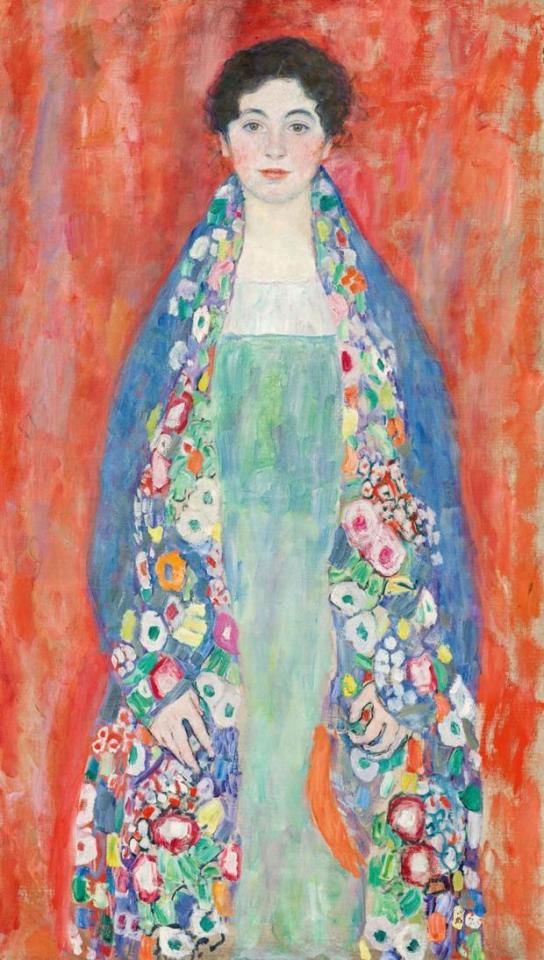
Gustav Klimt Portrait Found After Vanishing Nearly 100 Years Ago
It is one of the last works the artist painted before his death in 1918.
One of the last paintings by the renowned Austrian artist Gustav Klimt has miraculously been found after vanishing nearly 100 years ago.
The painting, titled Portrait of Fräulein Lieser, was found in Vienna after last being seen by the public in 1925. Until now, the only known photograph of the painting had been held in the archives of the Austrian National Library. The picture was likely taken in 1925 in connection with the Klimt exhibition by Otto Kallir-Nirenstein in the Neue Galerie, Vienna.
Since then, its location had been a mystery.
"The rediscovery of this portrait, one of the most beautiful of Klimt's last creative period, is a sensation," said the im Kinsky auction house in a statement announcing the discovery. "As a key figure of Viennese Art Nouveau, Gustav Klimt epitomizes fin de siècle Austrian Modernism more than any other artist. His work, particularly his portraits of successful women from the upper middle class at the turn of the century, enjoy the highest recognition worldwide."
The work of art will go up for auction at the im Kinsky auction house in Vienna on April 24 and is expected to fetch millions on the market.

"Klimt's paintings rank in the top echelons of the international art market. His portraits of women are seldom offered at auctions. A painting of such rarity, artistic significance, and value has not been available on the art market in Central Europe for decades," im Kinsky auction house said. "This also applies to Austria, where no work of art of even approximate importance has been available."
The painting will now travel worldwide on short exhibitions until it is auctioned and is set to be presented at various locations internationally, including stops in Switzerland, Germany, Great Britain and Hong Kong.
The model for the painting is labeled as Fräulein Lieser, also known as Margarethe Constance Lieser (1899-1965), daughter of the Austrian industrial magnate Adolf Lieser. But new research by the im Kinsky auction house into the history and provenance of the masterpiece has opened up the possibility that Klimt's model could have been another member of the Lieser family -- either Helene Lieser (1898-1962), the first-born of Henriette Amalie Lieser-Landau and Justus Lieser, or their younger daughter, Annie Lieser (1901-1972), according to officials.

"In April and May 1917, the sitter visited Klimt's studio in Hietzing nine times to pose for him," im Kinsky said. "Klimt probably began the painting in May 1917. The painter chose a three-quarter portrait for his depiction and shows the young woman in a strictly frontal pose, close to the foreground, against a red, undefined background. A cape richly decorated with flowers is draped around her shoulders."
The portrait is thought to be one of Klimt's last paintings and was done shortly before he died of a stroke on Feb. 6, 1918. The painting was left, with several small portions of it unfinished, in his studio and it is thought that the painting was given to the family who had commissioned it after his death.
The painting, however, would soon vanish and the exact fate of the painting after 1925 is unclear.
"What is known is that it was acquired by a legal predecessor of the consignor in the 1960s and went to the current owner through three successive inheritances," im Kinsky auction house said.
ByJon Haworth.
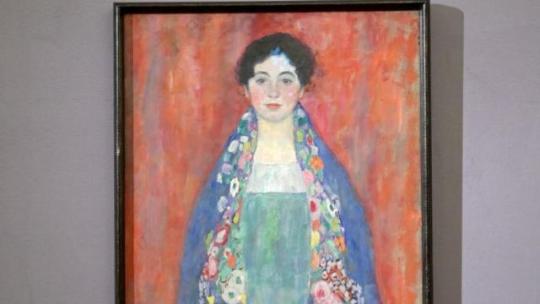
#Gustav Klimt#Gustav Klimt Portrait Found After Vanishing Nearly 100 Years Ago#Gustav Klimt Portrait of Fräulein Lieser#austrian artist#painter#painting#art#artist#art work#art world#art news#history#history news
68 notes
·
View notes
Text
Erich Hartmann

This is Erich Hartmann, the flying ace with the highest number of kills in history, timeline:
1922: He was born on 19 April 1922 in Weissach, near Württemberg.
1925: Given his father's difficulty in practicing medicine in Germany, the family moved to China.
1933: Adolf Hitler became Chancellor of Germany.
1936: At fourteen he obtained his glider pilot's license.
1937: At the age of fifteen he became an instructor in the Hitler Youth.
1939: WWII began.
1940: He joined the Luftwaffe.
1940: He began military flight training in East Prussia.
1942: He went to Zerbst-Anhalt.
1942: He graduated as a lieutenant in March and later attended advanced air artillery school.
1942: He made his first mission.
1942: He carried out his first aerial shootdown, a Shturmovik IL-2,
1942: He was decorated with the Iron Cross second class.
1943: Gunther Rall appointed him commander of the 9th Squadron.
1943: He received the Iron Cross first class.
1943: He received the Luftwaffe honor cup.
1944: He achieved three hundred aerial victories.
1944: He received the Knight's Cross with oak leaves, swords and diamonds.
1944: He married Ursula Pätsch.
1944: He was the fourth pilot in history to reach 250 planes shot down
1945: flying on a Bf 109G-14 to locate Soviet forces, he spotted a Yak-11 or Yak-9 fighter, which was performing aerobatics, and shot it down. It was his last victory, number 352, and also the last of the Luftwaffe during the conflict
1945: World War II ended.
1949: During his imprisonment, he was accused by the Soviets of war crimes and sentenced to twenty-five years of forced labor on charges of "sabotaging the Soviet war effort".
1955: He was freed and repatriated.
1956: He joined the newly formed Luftwaffe.
1970: He took his leave.
1971-74: As a civilian he was a flight instructor in Hangelar, near Bonn, avoiding public appearances as much as possible.
1993: He died on September 20th.
1997: Russia acquitted him of war crimes charges.
if you don't like it go with your life:
Sources:
Erich Hartmann's final interview
Wikipedia: Erich Hartmann
❗ I DON'T SUPPORT NAZISM, FASCISM OR ZIONISM IN ANY WAY, THIS IS AN EDUCATIONAL POST❗
98 notes
·
View notes
Text


Matylda with a Spare Head
(O Matyldě s náhradní hlavou)
1985, dir. Miloš Macourek, Adolf Born & Jaroslav Doubrava IMDB
#czech#czech cinema#czech film#Miloš Macourek#Adolf Born#Jaroslav Doubrava#Matylda with a Spare Head#O Matyldě s náhradní hlavou#animation#czech animation#short film#comedy#science fiction#adaptation#1980s#gif#central Europe#european cinema#european film#european animation#Czech Republic#Czechia#classicfilmedit#čumblr#film#film edit#czech pop culture#psychotronic film#czech movie#movie edit
15 notes
·
View notes
Text
"Today I think of my great-grandmother Crown Princess Margareta. She was born Margaret of Connaught at Bagshot Park in 1882 and married the Swedish King to be, Gustaf Adolf. Even though her life was all too short, she had a great impact on our country with her openness and liberal values."
- Crown Princess Victoria during her visit to the United Kingdom.
Margaret wearing the Cameo tiara which Victoria wore to her wedding:
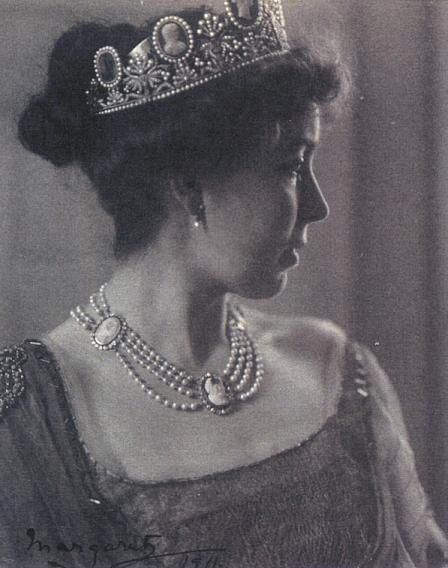
134 notes
·
View notes
Photo

Where Hungarian Nobel-prize winners were born.
Hungarian Nobel-prize winners:
Philipp Lenard (German-Hungarian)
Róbert Bárány (Jewish-Hungarian)
Richard Adolf Zsigmondy (Hungarian)
Albert Szent-Györgyi (Hungarian)
György Hevesy (Jewish-Hungarian)
György Békésy (Hungarian)
Jenő Wigner (Jewish-Hungarian)
Dénes Gábor (Jewish-Hungarian)
János Polányi (Hungarian)
Eliezer Wiesel (Jewish-Hungarian)
György András Oláh (Jewish-Hungarian)
János Harsányi (Hungarian)
Imre Kertész (Jewish-Hungarian)
Avram Hershko (Jewish-Hungarian)
Katalin Karikó (Hungarian)
Ferenc Krausz (Hungarian)
Born in the USA, with Hungarian ancestry:
Daniel Carleton Gajdusek (Hungarian-Slovak)
Milton Friedman (Jewish-Hungarian)
Louise Glück (Jewish-Hungarian)
The newest Nobel-prize winners are Ferenc Krausz and Katalin Karikó, for experimental methods that generate attosecond pulses of light for the study of electron dynamics in matter, and for the development of the mRNA technology respectively.
by hungary.maps
83 notes
·
View notes
Text
Mrs. Goebbels said to the children: "Children, don't be afraid, the doctor will now give you an injection that all children and soldiers will now receive." With these words she left the room.
8:40 p.m. (on May 1st). After 10 minutes, Ms. Goebbels, accompanied by me, went into the children's room, where she stayed for about five minutes and placed a crushed ampoule of cyanide in each child's mouth. (Each glass ampoule contained 1.5 cm high 3 cyanide.) When we returned to the anteroom, she said: "Now it's all over."
Then I went with her down to Goebbels' study, where we found him pacing up and down the room in a very nervous state. As she entered the study, Mrs. Goebbels said: "It's over with the children, now we have to think about ourselves." Goebbels replied: "We have to hurry, because we have very little time." Then Mrs. Goebbels said: "Here in the We don't want to die in the bunker," and Goebbels added: "It's clear, we're going out into the garden." His wife replied: "Not into the garden, but to Wilhelmsplatz, where you have worked all your life." (Wilhelmsplatz is located between the Reich Propaganda Ministry building and the Reich Chancellery.) During the course of the conversation, Goebbels thanked me for making her fate easier, then he said goodbye to me, wishing me success in life and a happy return home.
Words of Dr. Helmut Kunz where he recounted the situation in the Führer's bunker before and after the murder of the children. He was arrested after the war and interrogated about the fate of the Goebbels family.
On May 2, 1945, in the center of Berlin, on the Wilhelmsplatz, lieutenant colonels and majors in the presence of Berlin residents - Germans Lange, Wilhelm, the chef of the Reich Chancellery, and Schneider, Karl, the garage master of the Reich. Office - at 5 pm someone discovered the charred corpses of a man and a woman. They were Joseph and Magda Goebbels. Two pistols Walther no. 1 (damaged by fire) lay at the head of the two bodies.
A singed gold cigarette case was discovered on the Frau Goebbels' body, a gold NSDAP party badge and a singed gold brooch were discovered on the body. In addition, when the cigarette case found with the woman's body was examined, the monogram “Adolf Hitler - 29. X. 34” in German was discovered on the inside of a lid; As Voß explained, the case had been used by Magda for the last three weeks. Voß recognized the charred female corpse as Magda Goebbels and justified his statement with the information that the female corpse was the corpse of Goebbels' wife due to its stature (a little over medium size) and because of the NSDAP's gold party badge. (Magda was the only German woman to wear this badge; it was presented to her by Hitler three days before his suicide.)
On May 3, 1945, the corpses of children were discovered. Children's corpses lying on beds in a separate room in the bunker of the Reich Chancellery. They were dressed in white nightgowns, the girls had ribbons in their hair.
To identify the bodies on site, the prisoners of war - the personal representative of Grand Admiral Dönitz in the Führer's headquarters, Vice Admiral Voß, Hans-Erich, born 1897, the garage master of the Reich Chancellery, Schneider, Karl Friedrich Wilhelm and the cook of the Reich Chancellery, Lange, Wilhelm – who knew Goebbels, his wife and children personally well. Vice Admiral Voß, Lange and Schneider clearly identified the corpses - during interrogation and when the corpses were presented - as Goebbels, his wife and children... On May 1st. J. saw Voss Goebbels for the last time at 8:30 p.m. in the air raid shelter where Hitler's headquarters was housed. Goebbels explained in a conversation with Voß that family would follow Hitler's example, they would end their lives by suicide.
When viewing the children's bodies, Voß identified all of them as Goebbels' children, as he had seen them several times; One of the girls, Goebbels' daughter Heide, who was four years old, had been to Voß's apartment several times with her parents.
37 notes
·
View notes
Text
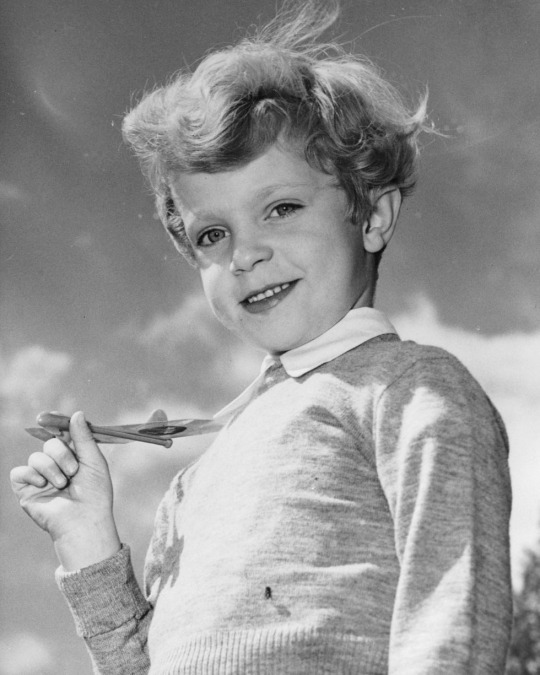

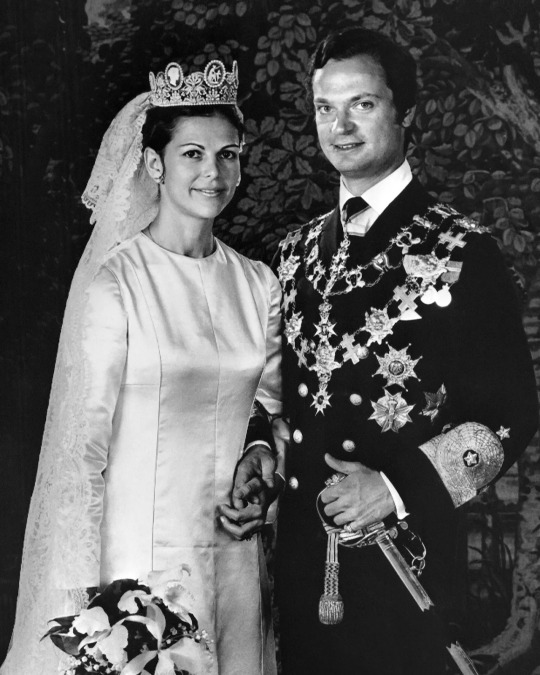

Happy 78th birthday to King Carl XVI Gustaf!
Born on April 30th 1946, Carl Gustaf Folke Hubertus acceded to the throne of Sweden upon the death of his grandfather, Gustaf VI Adolf, on 15 September 1973.
Carl XVI Gustaf became Sweden's crown prince and heir apparent to the throne at the age of four following his great-grandfather's death. Carl Gustaf's father, Prince Gustaf Adolf, died in a plane crash in 1947 when Carl Gustaf was only nine month old. He is the longest-reigning monarch in Swedish history, having surpassed King Magnus IV's reign of 44 years and 222 days on 26 April 2018.
He married Silvia Sommerlath on 19 June 1976 and they have three children: Crown Princess Victoria, Duchess of Vastergotland, Prince Carl Philip, Duke of Varmland and Princess Madeleine, Duchess of Hälsingland and Gästrikland.
29 notes
·
View notes
Text

"Ask me about Lidice."
That phrase is a promise I made after researching the events I'm about to tell you, to keep the name of Lidice alive and meaningful.
Here is the story.
In the summer and fall of 1942, a strange phenomenon began springing up in distant corners of the world, in which streets, towns, even children, were being given the same name.
It all began with the killing of a monster.
At the end of December in 1941, two Czech soldiers living in exile in England parachuted back into Czechoslovakia on a mission to assassinate the ruthless and brutal German SS officer Reinhard Heydrich, who was then working as the Reich-Protector over much of that occupied country.
During his reign of terror, Heydrich - one of the main architects of the Final Solution, and nicknamed "The Butcher of Prague" - kept the "peace" through racial suppression, forced labor, executions, and sending "undesirables" off to death camps.
In May of 1942, a team led by the two parachutists, named Jan Kubiš and Jozef Gabčík, planned and carried out an ambush against Heydrich as he drove in his open-topped car through Prague.
Wounded by an explosive hurled at the car, Heydrich died a week later.
In the aftermath of the attack, Kubiš and Gabčík, along with most of their co-conspirators, were killed.
When he learned of Heydrich's death, Adolf Hitler flew into a rage and ordered massive reprisals against the Czech people.
Because of spurious intelligence reports, the full force of Hitler's anger fell chiefly upon two small villages: Lidice (pronounced "Li-dí-tsay") and Ležáky (pronounced "Le-zyah-ke").
Two days after Heydrich's funeral, German SS and SD troops descended upon the two towns.
In Ležáky, no adult was left alive, the children were seized, and the houses and buildings were burned to the ground.
In Lidice, the population was dragged from their homes, and every male over the age of fourteen was shot and killed - at first five at a time, but when this was found to be taking too long, they killed them in groups of ten.
The women were deported to concentration camps for forced labor or extermination.
Those few children who met specified "racial purity" criteria were sent to Germany for indoctrination and adoption by the families of members of the SS.
Most of the rest of the children were killed in the backs of special enclosed trucks by carbon monoxide, the precursors to the gas chambers later installed at places such as Auschwitz-Birkenau.
Then Lidice suffered an additional horror. Believed (erroneously) to be the town where some of the conspirators had been hiding before the assassination, the town was burned, and stone structures were dynamited.
Slave labor was brought in to dismantle the ruins brick by brick and haul everything away, so that, as Hitler ordered, every trace of the town was wiped from the face of the earth so that the memory of Lidice would die.
But it didn't.
The Nazis allowed reports of the massacre to be released as a warning to other occupied countries, but as the news began spreading around the world, it had quite the opposite effect....
In Mexico, the village of San Jerónimo Aculo changed its name to San Jerónimo Lídice....
In Coventry, England, a shopping market was renamed Lidice Place....
In the American state of Illinois, a new town being laid out was named Lidice....
Also in Illinois, the American lawyer and politician Wendell Wilkie eulogized the destruction of the town to a silent, stunned audience, using the news reports from the Nazis themselves to condemn their barbarity....
In the United Kingdom, the Lidice Shall Live! drive - run mostly by British miners - raised money to help rebuild the town following the war....
In places all over the free world the name Lidice began appearing, and hundreds of children born that year were named Lidice by their parents, and the name continues to be given even to this day.
What the Nazis hoped would be a warning to their enemies turned into a rallying cry, and helped show a world still mostly ignorant of Nazi brutality why the fight against the Third Reich was so necessary.
When the war ended, a handful of women and children who survived the concentration camps returned to the site where Lidice had been, and, with international help, began rebuilding the town on a site nearby.
Today there is a memorial near the town dedicated to the children who suffered and were lost during the Nazi occupation. There also is a larger memorial to the annihilation of the town and the murder of its people. And there's even another memorial placed in gratitude to the British miners who helped the town rebuild.
In 1942, with so many major events grabbing headlines, that the world took notice of the destruction of one tiny town that nobody had ever heard of was a miracle. Yet after the war, what happened in Lidice largely dissolved from the world's memory as Czechoslovakia fell behind the Iron Curtain.
But now that's changing.
As part of the Unearthed Project, people all over the world are being asked to spread the memory of what happened to Lidice in 1942, and of the kindness and generosity through which the town was rebuilt, by promising to tell at least two people the story....
When I first heard about this project and what they were asking, I knew I could do better than just telling two people - this page reaches around 7 million people each month, so by writing this post I am fulfilling my promise to share, and then some. It's my honor to be able to do so.
Now I'm asking you to make and fulfill that same promise, as well, to tell at least two people this story, so we can honor the memory of the victims of Lidice and Ležáky: the men and teens who were shot, the children who were gassed, the women who perished in death camps, and the caring hearts of all those around the world who vowed never to let them be forgotten.
~*~
All told, around 1,300 people were killed by the Nazis in retaliation for the assassination of Reinhard Heydrich.
His grave in Berlin has been unmarked since the Soviet occupation.
Historia Obscurum
132 notes
·
View notes



